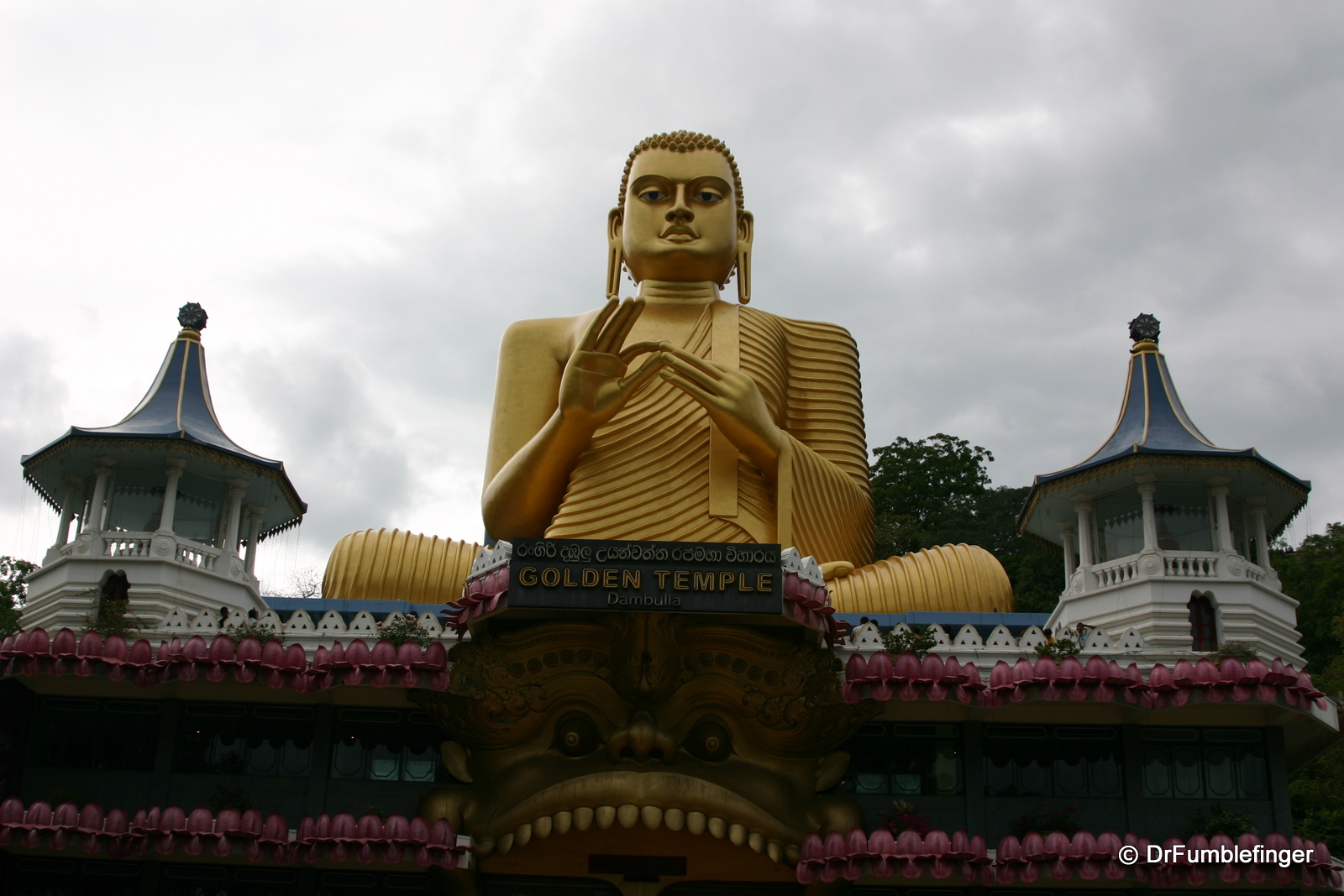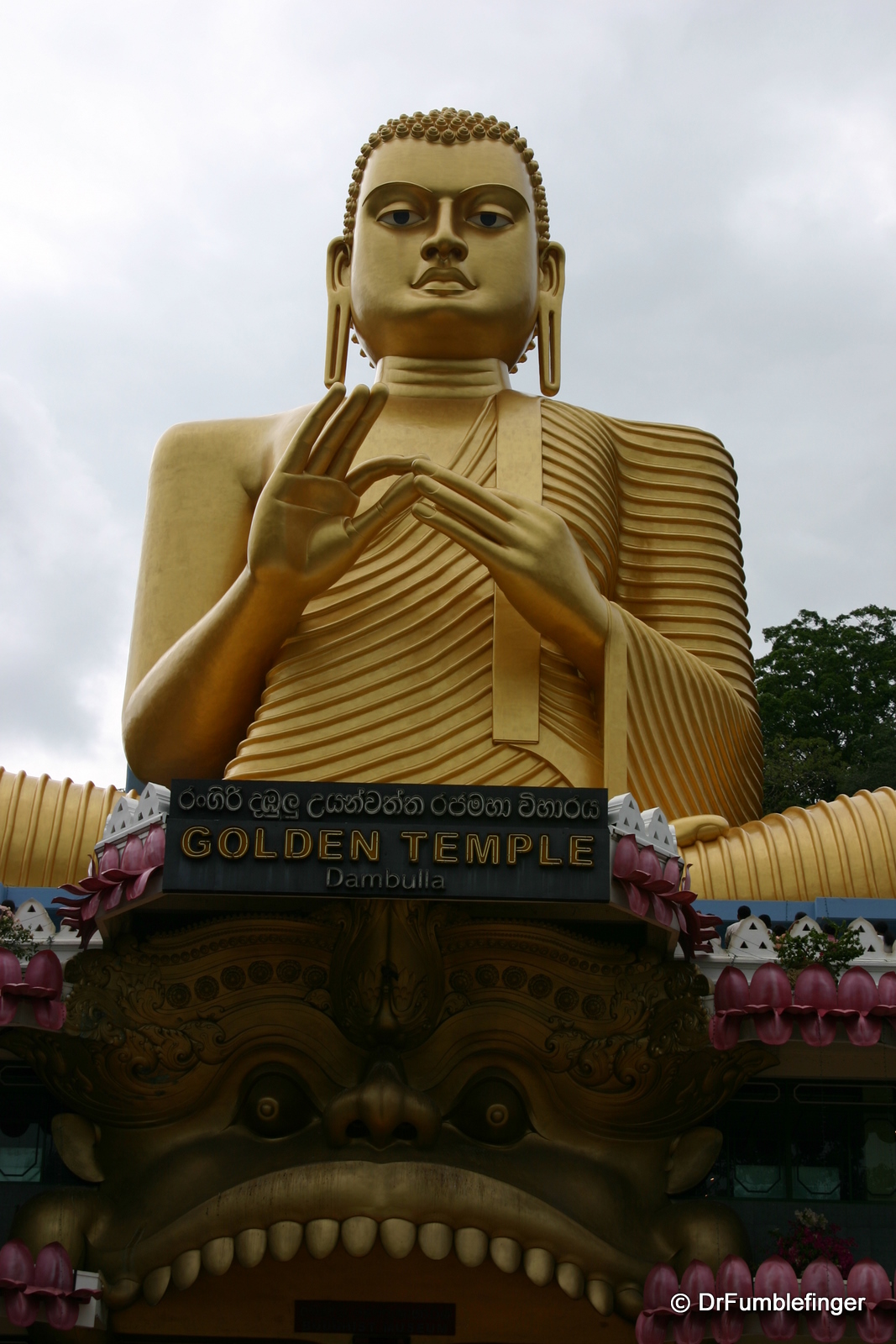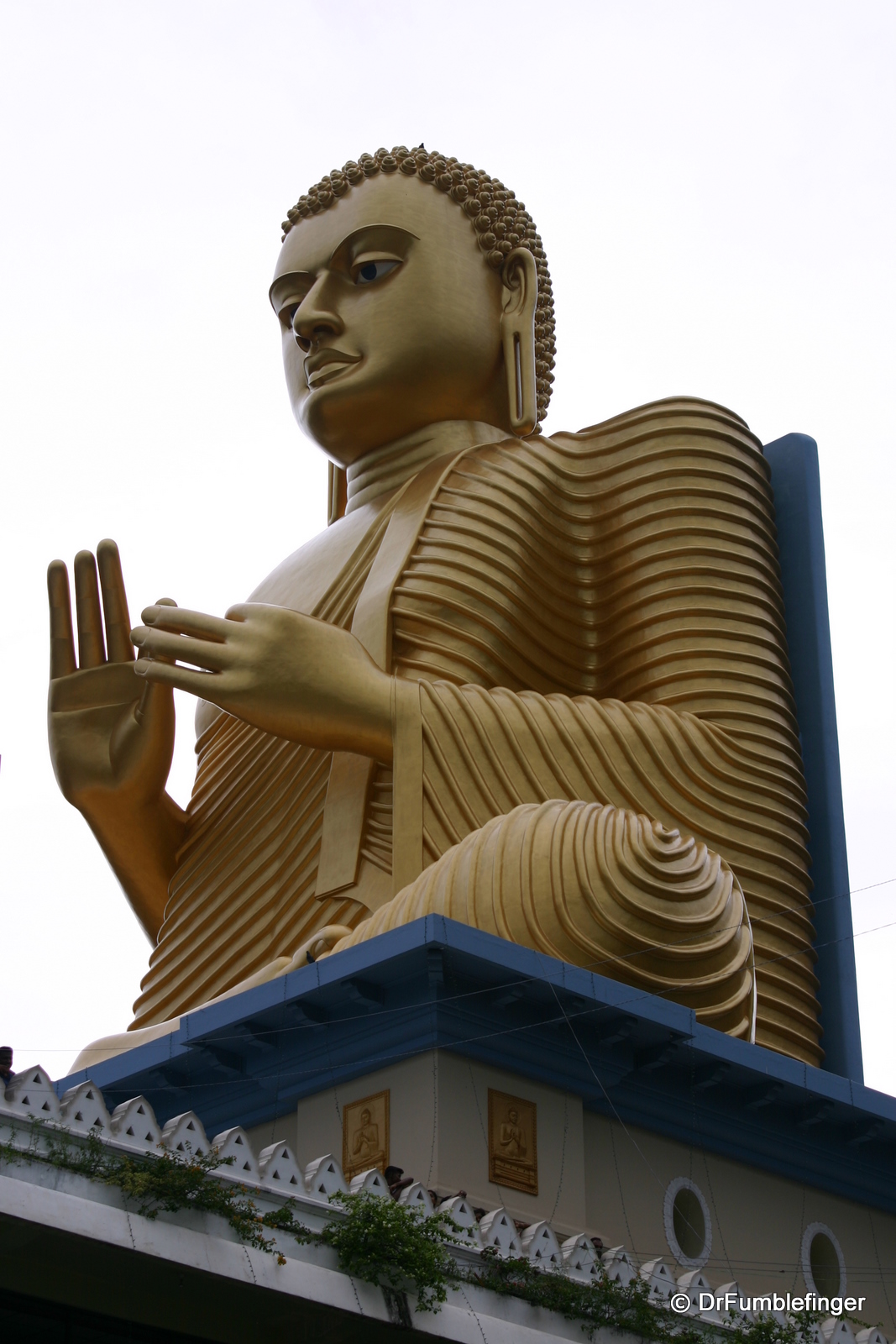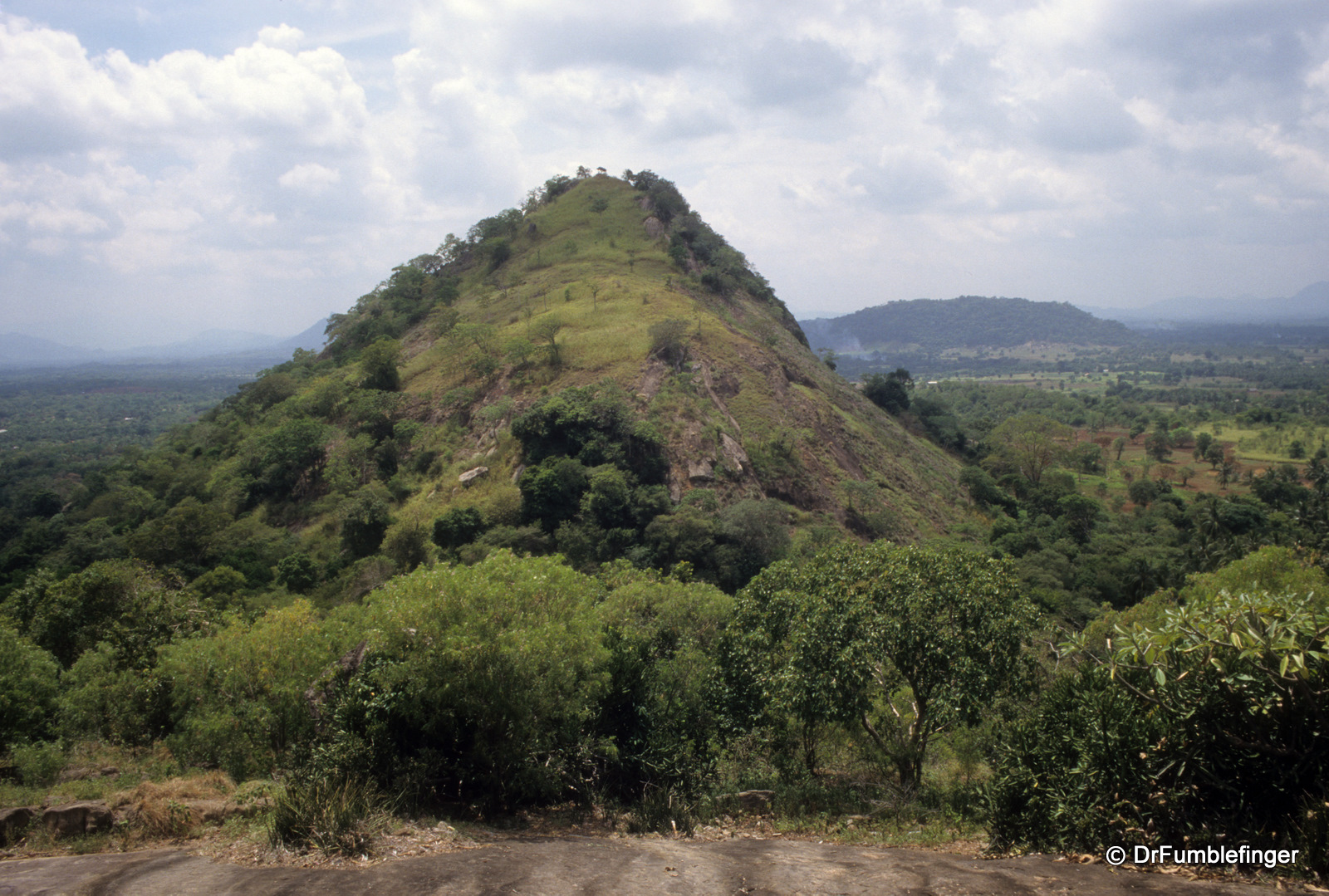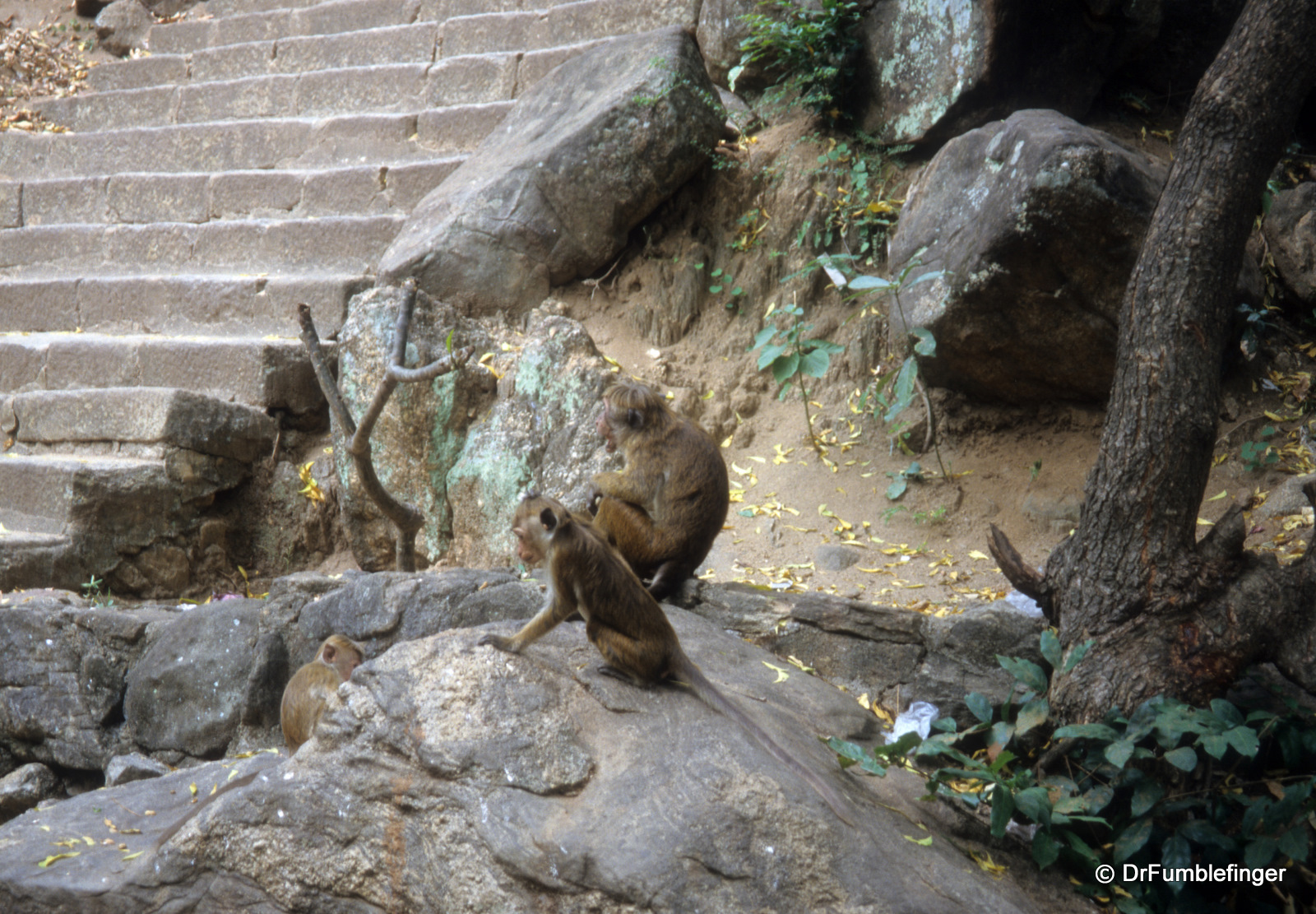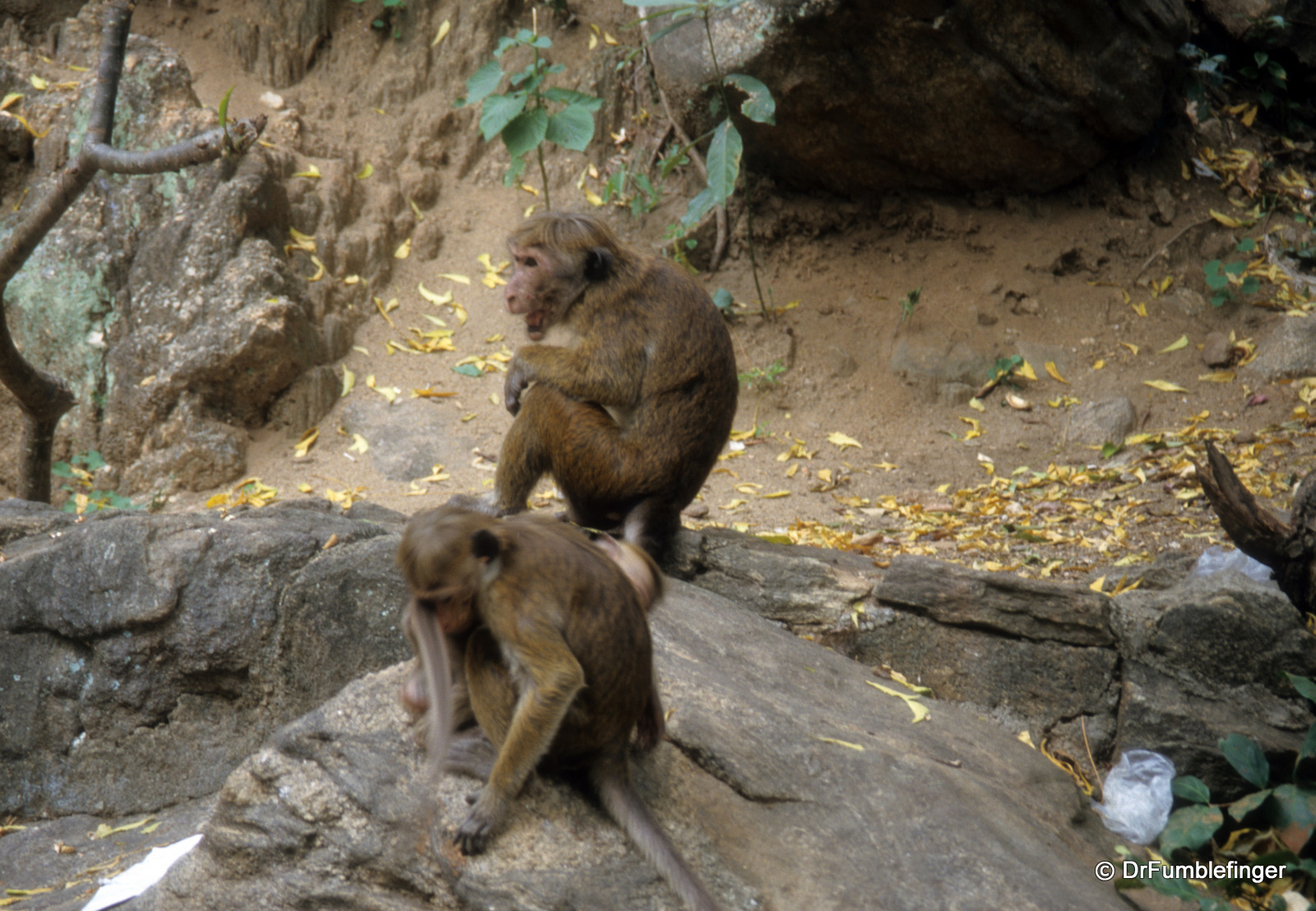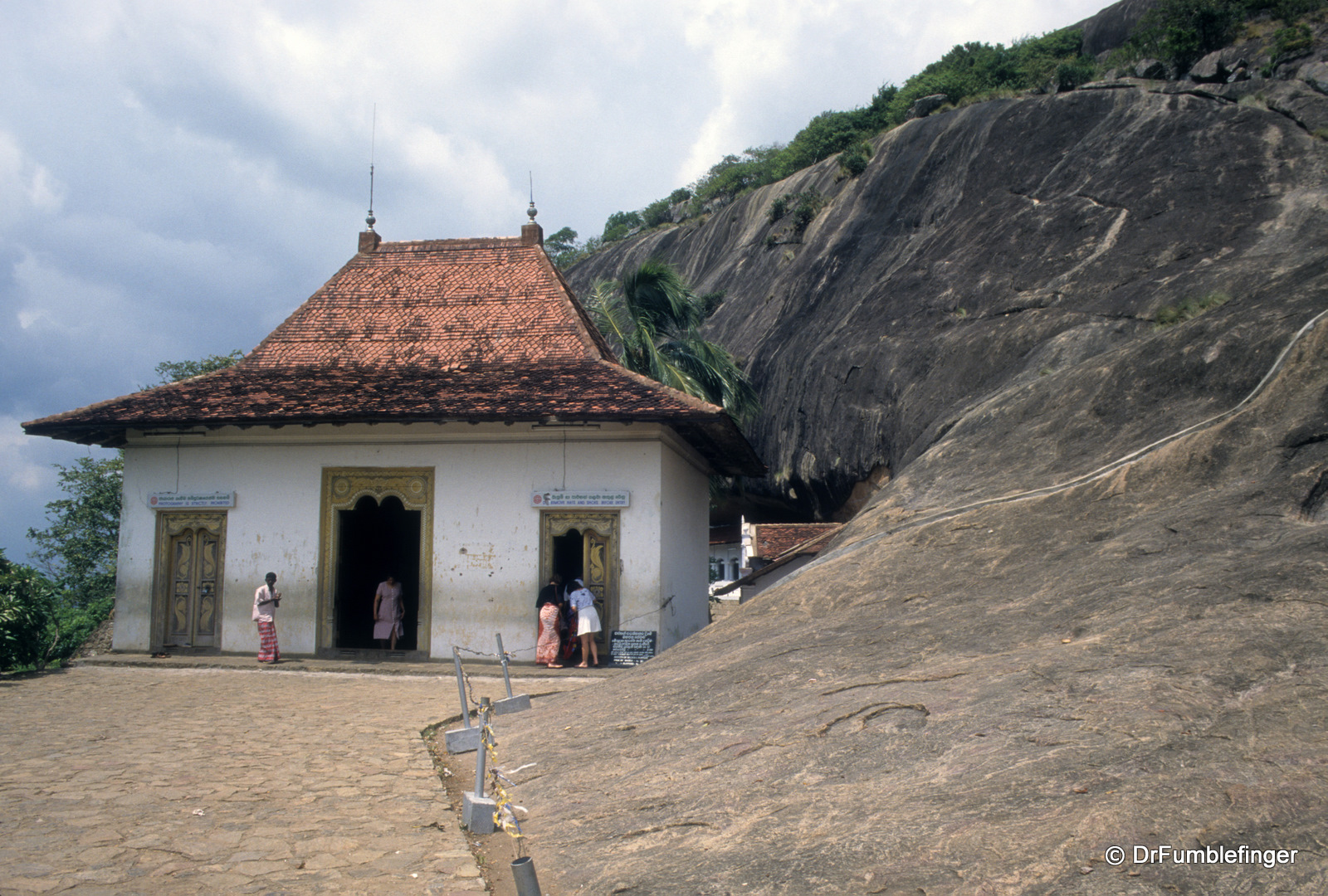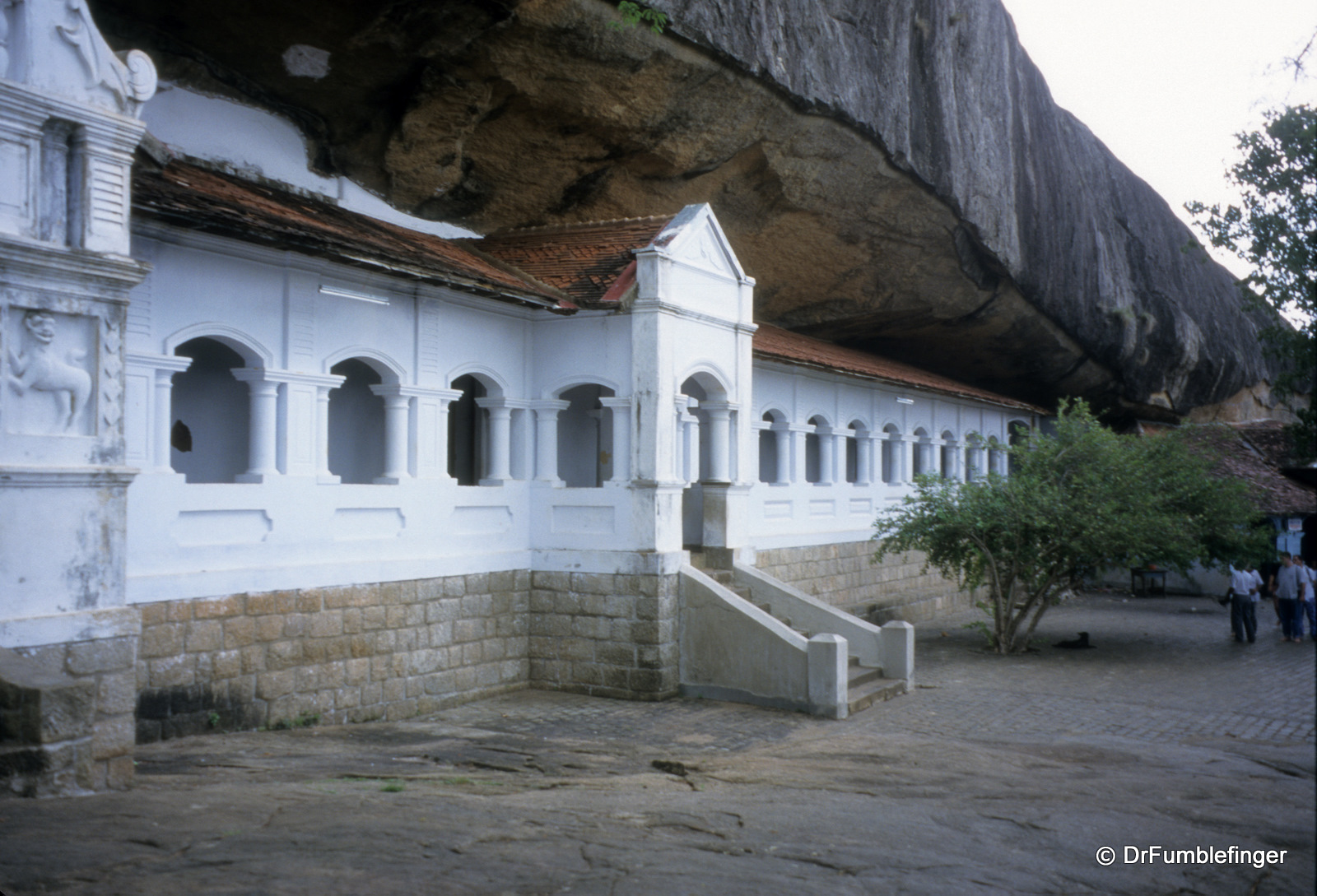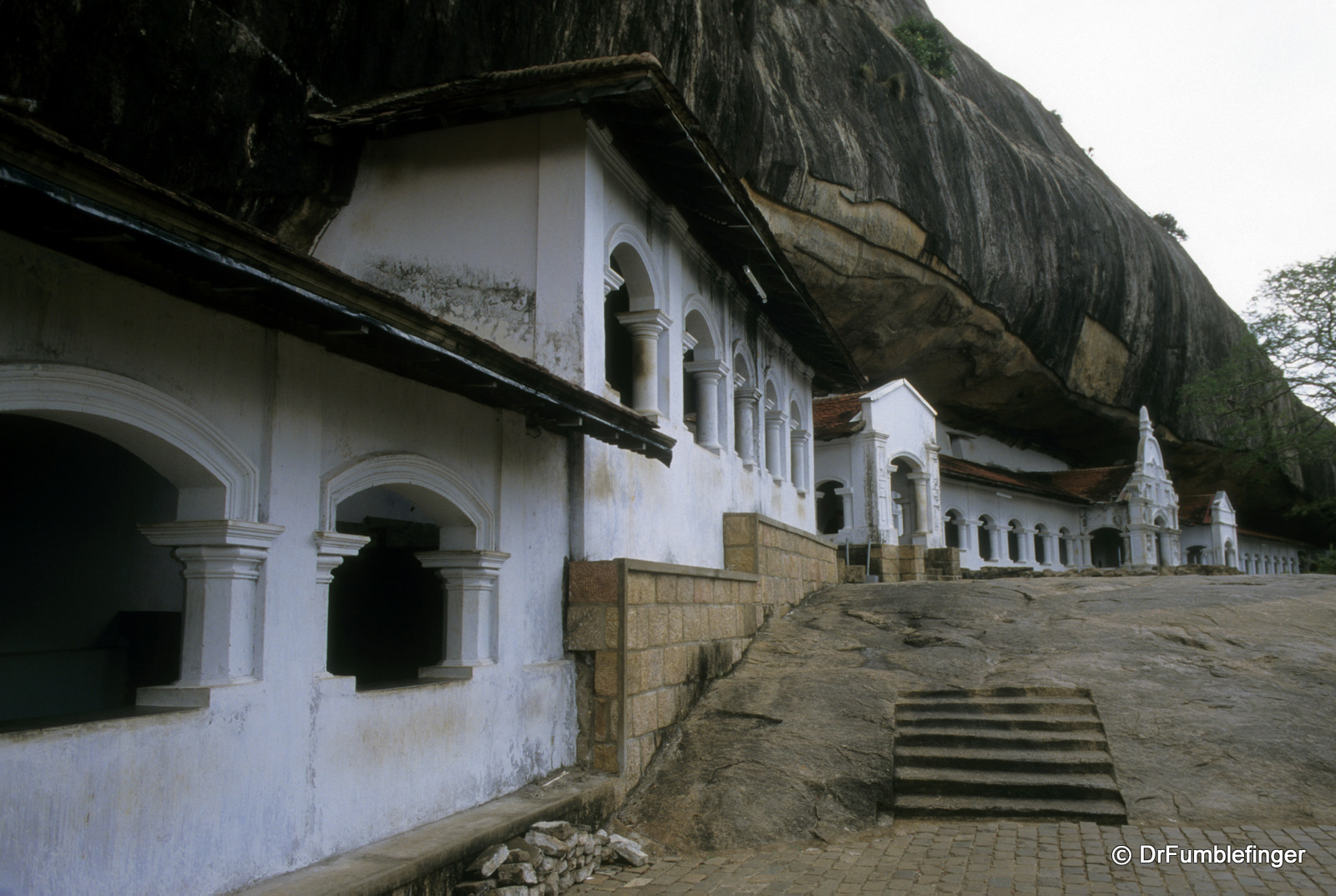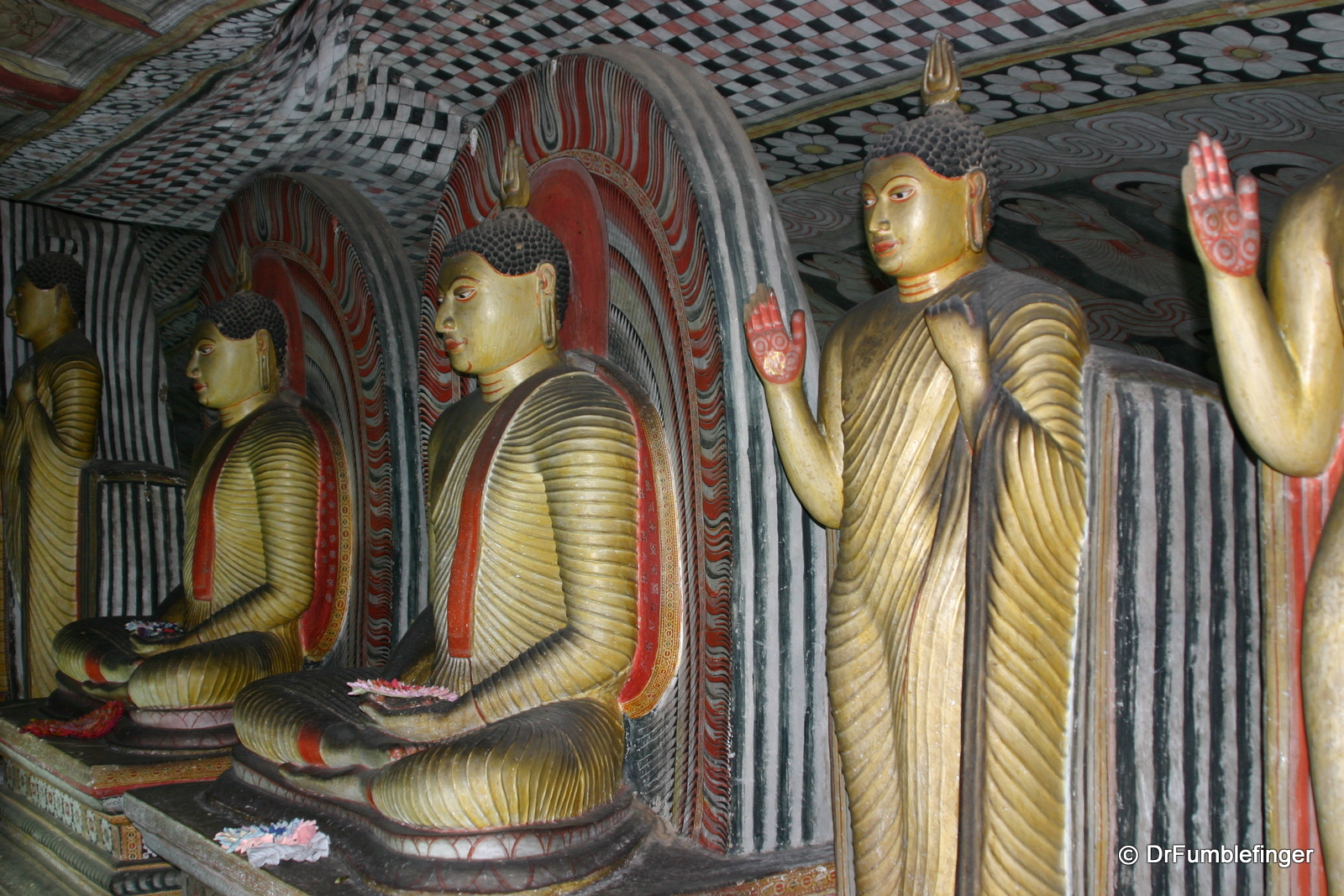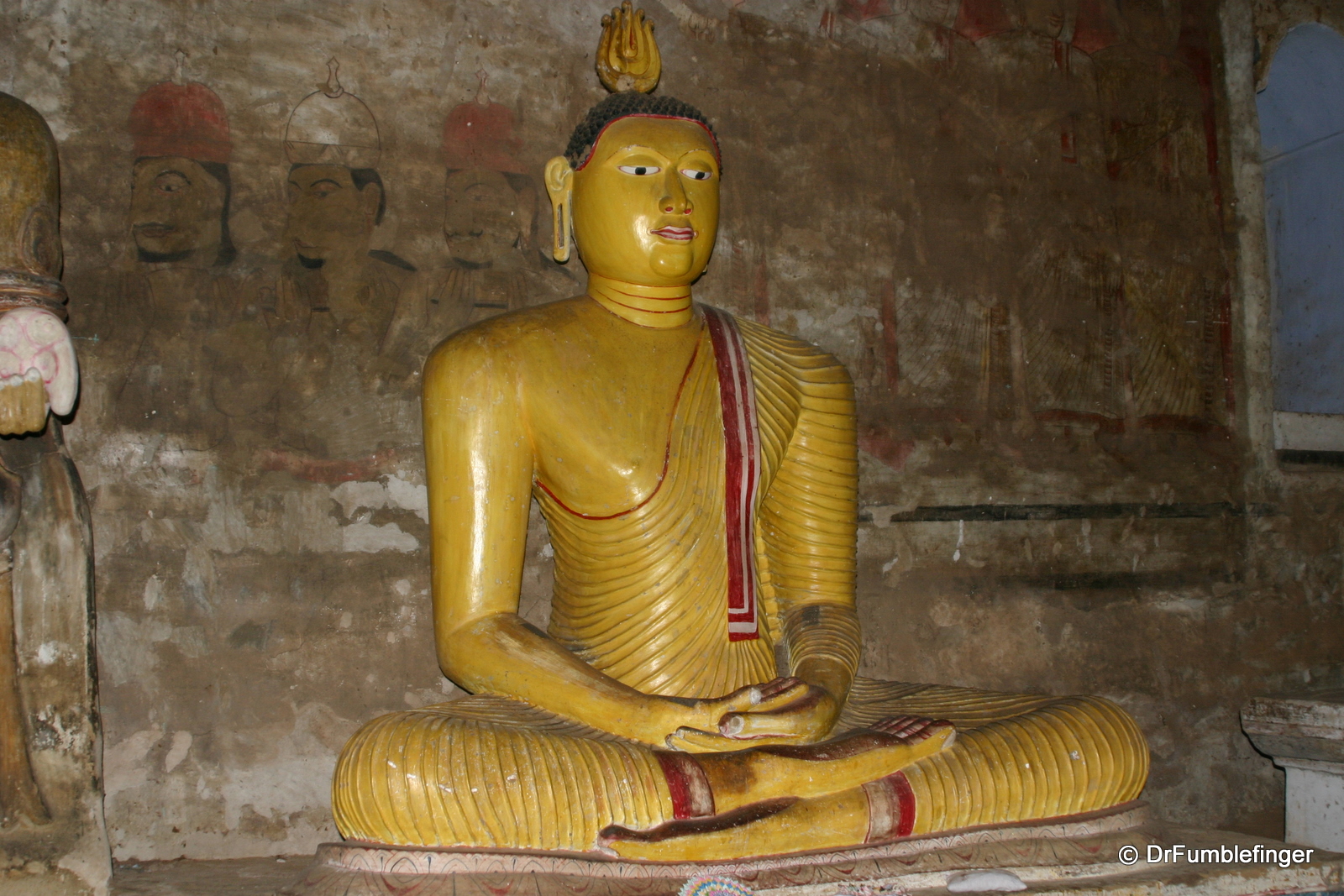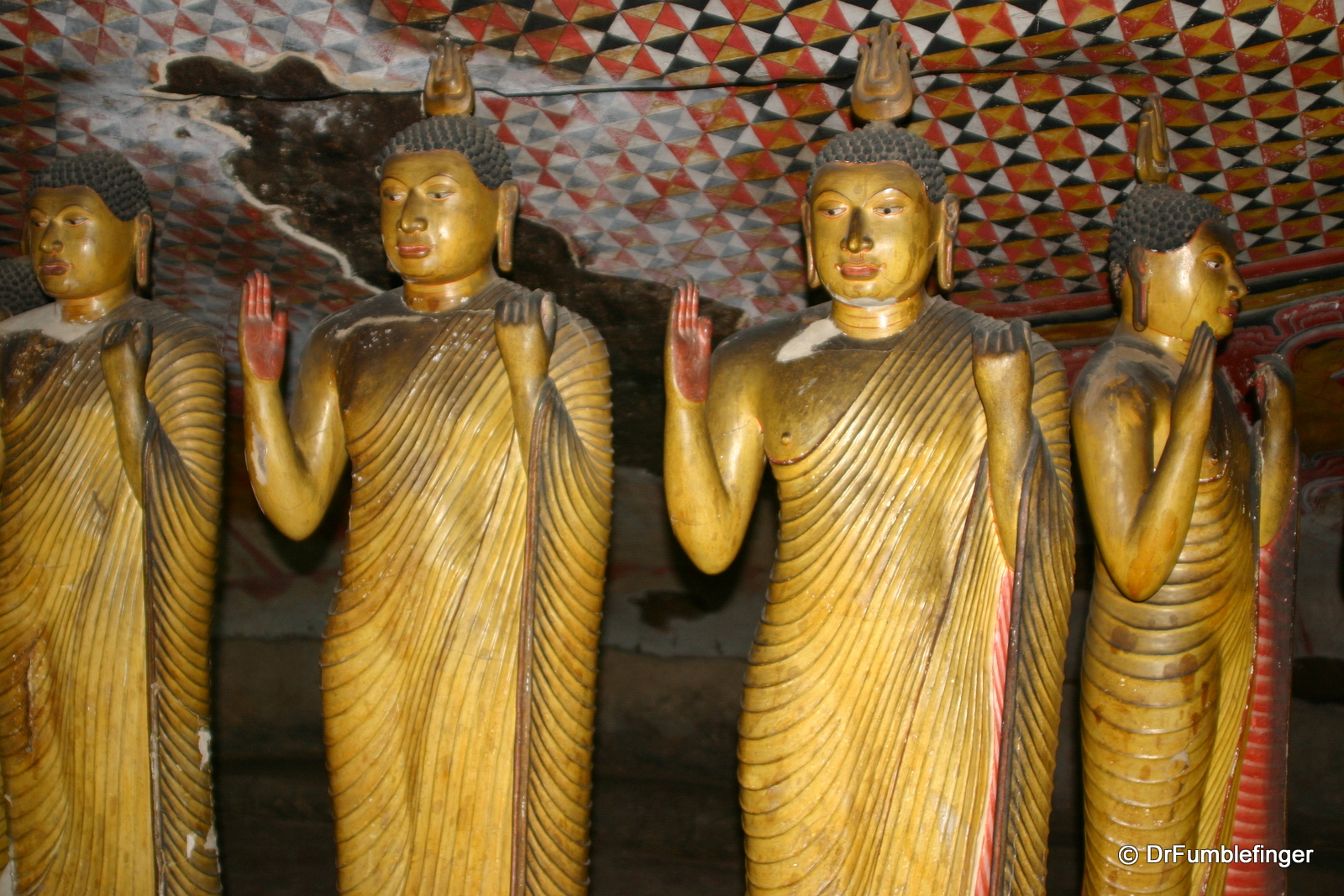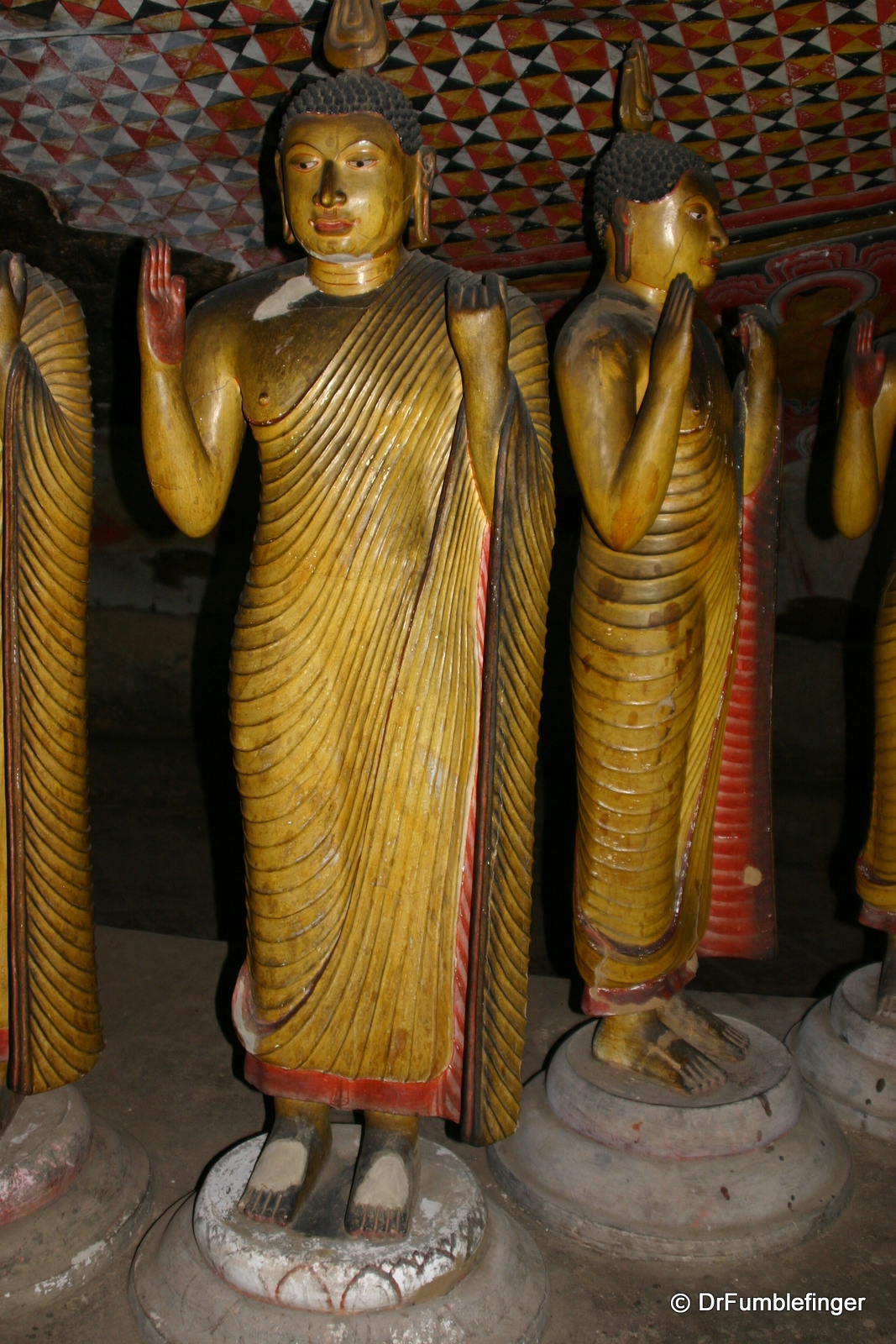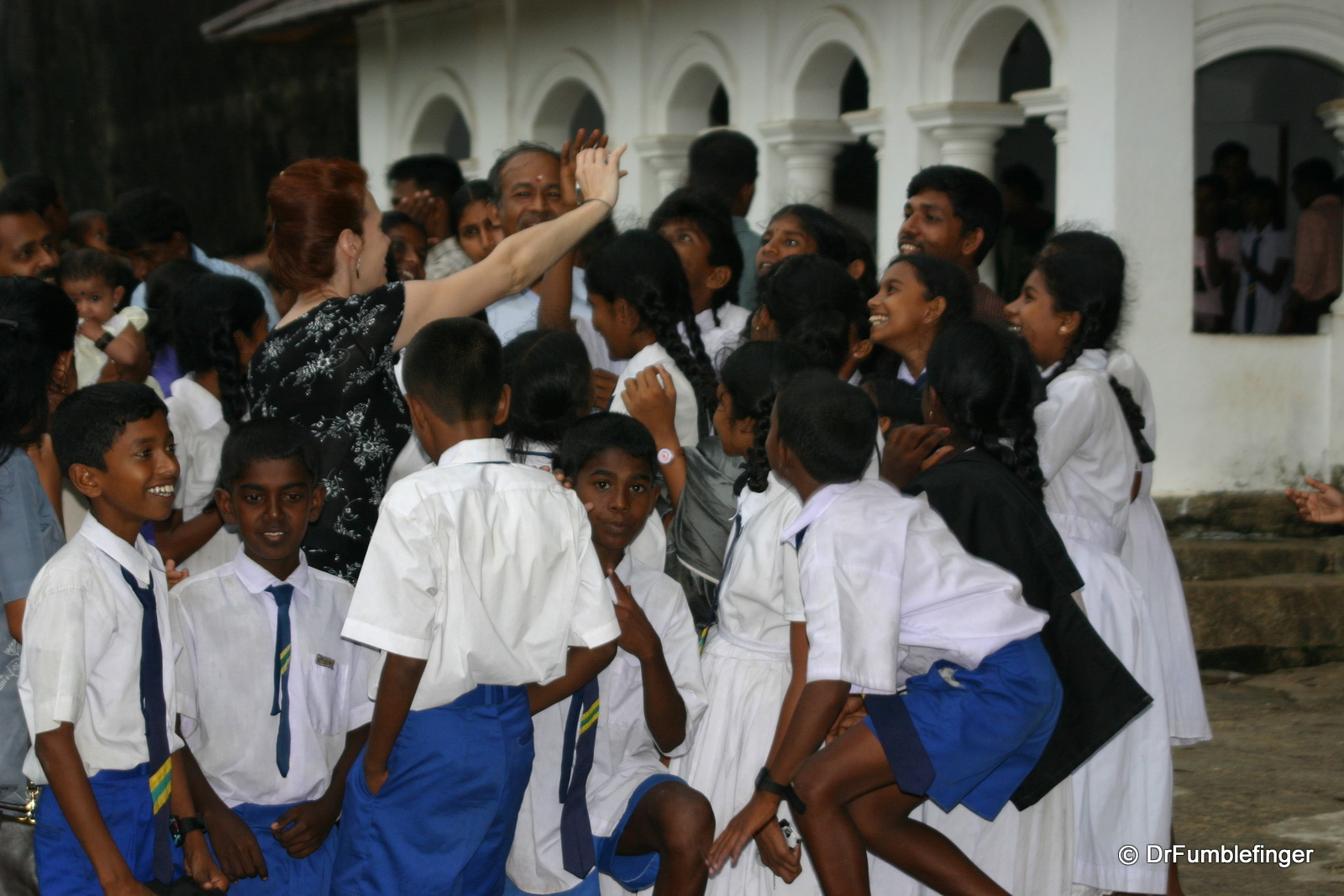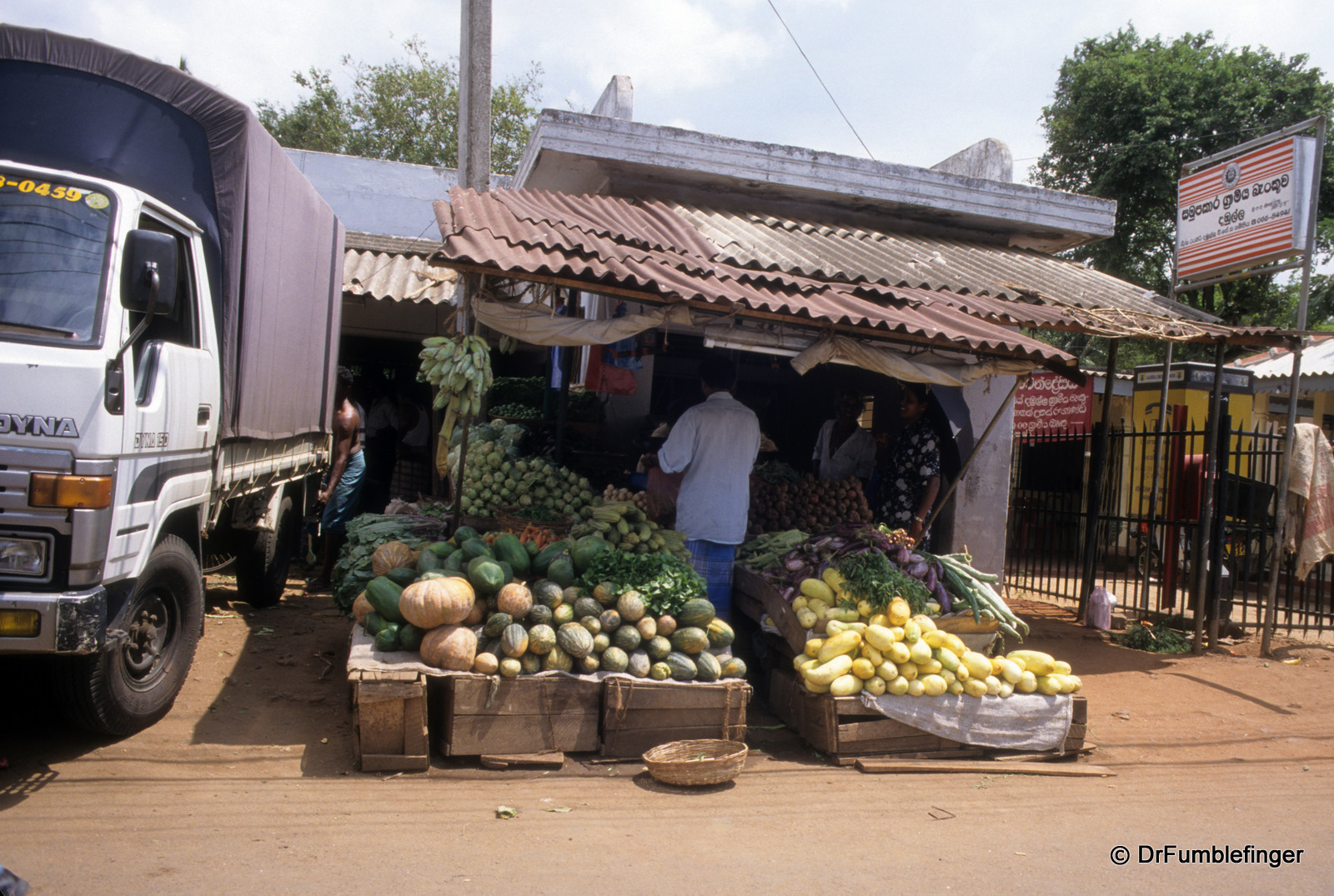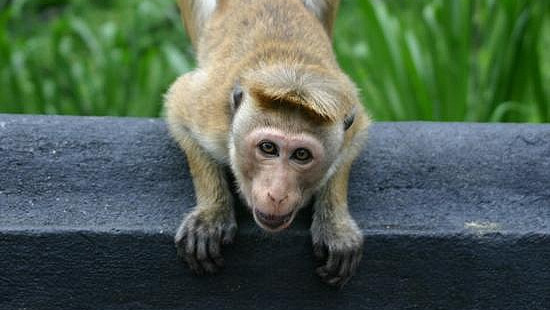
Dambulla is known for its Cave Temples which predate Christ. Legend has it that a Sri Lankan King, driven out of Anuradhapura, found a hiding place and refuge within these caves. When this king regained his throne he decreed the caves should be a shrine and began fashioning them into the temple complex you can visit today. Subsequent kings progressively added to the shrine, including Buddha carvings and gilding the caves’ interior; the last additions were the interior paintings finished around 200 years ago, including over 1500 Buddha images. As with most of the other ancient sites around Sri Lanka, Dambulla is a UNESCO World Heritage Site.
Most tourists who stop at Dambulla do so while traveling from Kandy to the rock fortress ofSigiriya, as both sites can comfortably be seen in one day. Your visit to Dambulla begins in a commercial area featuring what is claimed to be the largest Buddha statue in the world, over 30 m in height. This golden statue and the complex of buildings surrounding it were only recently completed (they were not there during my first visit to Dambulla in the 1990s) and in my opinion do little to prepare the visitor for the historic treasures which lie ahead. So don’t waste much of time around the entrance.

Outside of the Cave Temples in Dambulla
After paying a small fee you start ascending a moderately steep hill which you climb for about ten minutes, gaining perhaps 125 m (around 400′) in altitude. As you climb take the time to stop and look around and enjoy the beautiful lush green scenery of the area — best appreciated from the cave level. The large monolith of Sigiriya can been seen at a distance. There are large numbers of Toque monkeys around that provide distraction but be careful of them; they are not scared of people and can be quite aggressive. During one of my four visits to Dambulla a monkey bit the leg of an elderly lady drawing blood and causing her a great deal of pain. The monkeys survive and thrive not only on human blood but especially on the gifts of food left outside the cave temples.

Interior, Cave Temples in Dambulla
The temple complex has beautiful white walled entrances set against the granite overhang and cave complex. There are five separate caves, each only subtly lite making it difficult to take good photos which show the scale of the caves, but I’ve included a few interior close-ups below. Together the caves contain around 150 statues of the Buddha and a few Hindi gods. Take your time walking thru each cave. Some caves are quite small; the largest, Cave II, is the most impressive of the five — probably mostly because of its large number of artifacts. Water dripping down its walls is collected in vessels and used in special ceremonies.
My last visit to Dambulla was during Vesak and the place was crowded with pilgrims. Usually one does not find it too crowded.
The town of Dambulla, adjoining the cave shrine, is a typical small rural Sri Lankan town mostly noted as a gateway to the cave temples and nearby Sigiriya. A variety of affordable accommodations are available in Dambulla. I never stayed here but did enjoy several tasty lunches at some of the rest houses.
(Click on thumbnails to enlarge, right arrow to advance slideshow)
